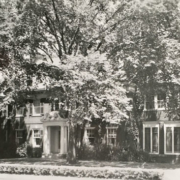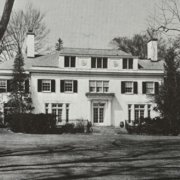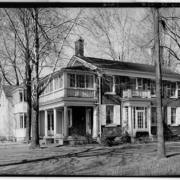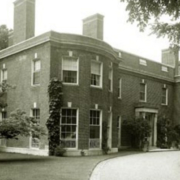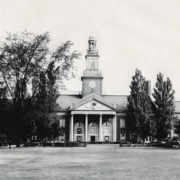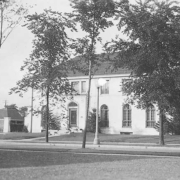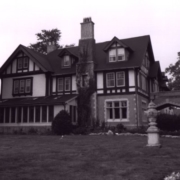Historical Architecture of Grosse Pointe – George D. Mason – A Master at Work – Part 1.
As renowned Detroit historian Clarence M. Burton once wrote, quite simple George DeWitt Mason was “the dean of Detroit architects”.
In a city that boasts the sublime skills of Albert Kahn, and Louis Kamper, Mason takes his place alongside these two great designers as the men responsible for many of Detroit’s iconic buildings. Between them this trio have created some of the finest structures in the city and are credited with having a national reputation in their profession.
With a career spanning over 50 years George D. Mason created many historic buildings in and around the city, including several homes in Grosse Pointe, 9 of which (that we know of) are still standing.
Born in Syracuse, New York in 1856 the family moved to Detroit in 1870. After graduating from high school in 1873 he stated working for the architectural firm of Henry T. Bush. It is reported he advanced quickly and it is also believed he spent some time at the office of Smith, Hynchman and Grylls (owned by founder Sheldon Smith during this era) which was a popular place in the city for up-and coming architects to train and gain experience.
It wasn’t long before Mason was ready to form a practice of his own; in 1878 he joined Zachariah Rice to form the firm Mason & Rice. The partnership would last around 20 years, during which the duo created many iconic structures including:
- The grand hotel, Mackinac Island (1887)
- First Presbyterian Church (1889)
- Trinity Episcopal Church (1890)
- Belle Isle Police Station (1893)
- The Hiram Walker and Sons Building, Windsor, Ontario (1896).
During this era Mason spent several months traveling in Europe, spending most of his time studying architecture in England, France, Italy and Germany. On his return to Detroit it is reported the firm hired a young Albert Kahn who worked for the duo from 1884 until 1896, creating sketches and learning his trade under Mason.*
In 1898 Mason started practicing independently, and would do so until 1920. During this time he partnered with Kahn on a couple of projects including the Palms Apartments in 1903 and the Belle Isle Aquarium in 1904.
In 1920 Mason organized the corporation of George D. Mason & Co, taking the role of president. It was during this period of his career Mason Created some of Detroit’s most recognizable buildings including:
- Trinity United Methodist Church, Highland Park (1922)
- The Detroit Yacht Club (1923)
- The Masonic Temple (1922)
George Mason in Grosse Pointe
George Mason first appeared in Grosse Pointe in 1882. The firm of Mason & Rice was commissioned to design ‘Edgmere’ for Joseph Berry, one of the first grand year-round homes in the community (located at 50 Lake Shore Drive – now demolished).
At the time the predominant style of the firm was heavily influenced by “Richardson Romanesque” – a style that was characterized by low-slung arched entrances, dark masonry and detailed brickwork. This approach was immensely popular though relatively short-lived.
In 1916, Mason, now working on his own, created a series of superb homes in Grosse Pointe, starting with 1040 Harvard, Grosse Pointe Park.
Over the next 21 years he designed 10 homes in the community, many of which have a very distinctive style, in that they were grand structures with individual personalities:
1916
1040 Harvard, Grosse Pointe Park: 5,000 sq ft
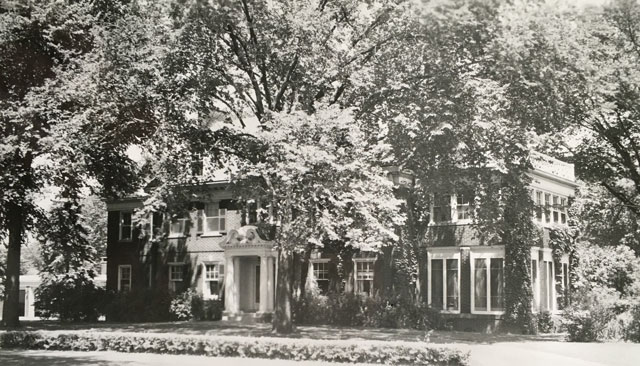
1917
1 Donovan Place, Grosse Pointe Farms: 9,500 sq ft
1920
33 Oldbrook Lane, Grosse Pointe Farms: 9,881 sq ft – Listed on National register of Historic Places
1925
784 Berkshire, Grosse Pointe Park: 2,856 sq ft
1175 Three Mile Drive, Grosse Pointe Park: 8,166 sq ft
201 Lake Shore Road – Harley Higbie House: Demolished 1988
1929
315 Lakeland, Grosse Pointe: 7,274 sq ft
109 Kenwood, Grosse Pointe Farms: 10,518 sq ft
1931
15840 Lakeview Court, Grosse Pointe Park: 7,794 sq ft
1937
66 Sunningdale, Grosse Pointe Shores: 3,348 sq ft
Having arguably had the greatest influence on the architectural scene in Metro Detroit George D. Mason died in 1948. As a result of his dedication and natural talent in his profession we are left with some truly iconic structures.
*Photos courtesy of the Higbie Maxon Agney archives unless stated.
Written by Katie Doelle
© 2016 Katie Doelle

